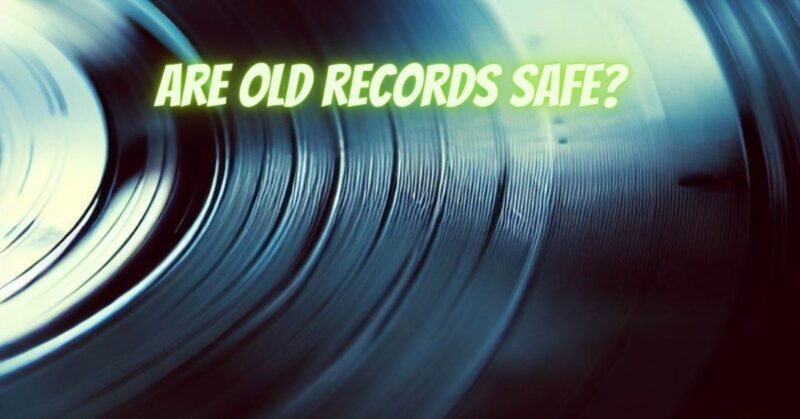Vinyl records, cherished for their analog warmth and nostalgic appeal, have been a staple of music collections for generations. Many collectors and enthusiasts wonder whether old records are safe to play and enjoy, especially considering the wear and tear that comes with time. In this article, we’ll explore the safety of old records and provide insights into how to preserve and enjoy them without causing damage.
The Aging Process of Vinyl Records
Over time, vinyl records can experience wear and deterioration due to various factors:
- Physical Wear: Repeated plays, mishandling, and improper storage can lead to scratches, scuffs, and grooves that affect playback quality.
- Dust and Dirt: Dust and dirt particles can accumulate on the record’s surface and within its grooves, causing audible pops and crackles during playback.
- Warping: Changes in temperature and humidity can cause records to warp, making them difficult to play and potentially damaging the stylus or turntable.
- Chemical Deterioration: Some vinyl records from the past may exhibit chemical deterioration, such as vinyl degradation, causing surface noise and loss of fidelity.
Ensuring Safe Playback of Old Records
While old records may require special care, they can be safely enjoyed with the following precautions:
- Cleanliness: Cleaning is essential for old records. Use a soft, anti-static brush or a record cleaning machine to remove dust and debris. Avoid harsh chemicals that can damage the vinyl.
- Stylus Inspection: Ensure that your turntable’s stylus (needle) is in good condition. A worn or damaged stylus can harm both the record and your listening experience.
- Proper Handling: Always handle records by their edges to prevent fingerprints and smudges. Use a clean, lint-free cloth when necessary.
- Storage: Store records vertically in dust-free sleeves and protective outer jackets. Keep them away from direct sunlight, extreme temperatures, and humidity.
- Turntable Calibration: Calibrate your turntable’s tracking force and anti-skate settings to avoid excessive stylus pressure on the record’s grooves.
- Record Mats: Consider using record mats made of materials like cork or felt to help reduce static and minimize surface contact with the turntable platter.
Restoring Old Records
For records that require more extensive cleaning or restoration:
- Record Cleaning Machines: Consider investing in a record cleaning machine for thorough and efficient cleaning.
- Warp Repair: Records with minor warping may be salvageable through various methods, including weight-based flattening techniques or professional services.
- Specialized Cleaning Solutions: Some stubborn contaminants may require the use of specialized cleaning solutions or even ultrasonic cleaning systems.
Digital Archiving
To preserve the content of old records while reducing wear from playback, consider digitizing them. This process involves recording the analog audio into a digital format, such as WAV or FLAC files. Once digitized, you can enjoy the music without the need for frequent record playback.
Old records, despite the wear and tear that can occur over time, can be safely enjoyed with proper care and handling. Regular cleaning, stylus maintenance, and appropriate storage are key to preserving the longevity and sound quality of vinyl records. While some records may require more extensive restoration, most can be brought back to life with the right techniques and equipment. By following these guidelines, you can continue to relish the analog warmth and charm of old records while ensuring their safe and lasting enjoyment.


